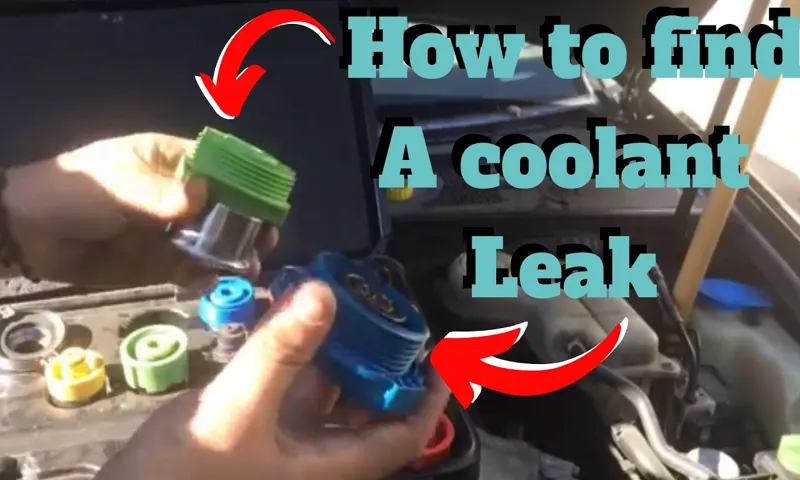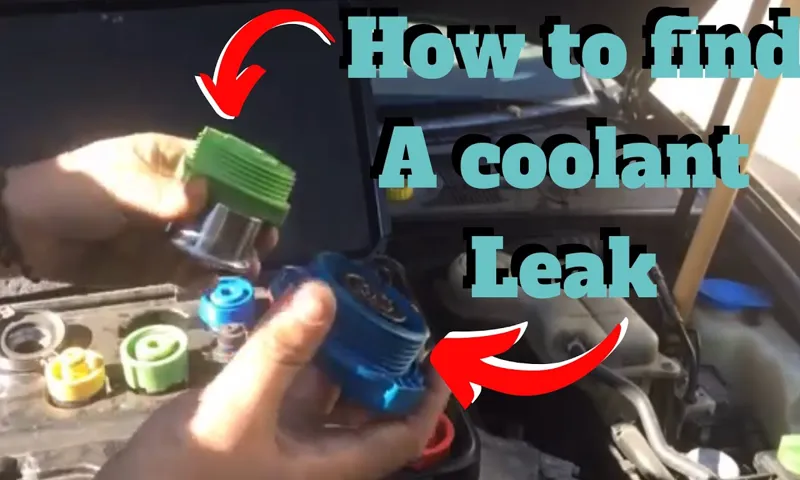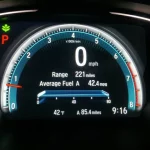If you’ve ever noticed puddles of liquid beneath your car, you may be wondering whether it’s a coolant leak or something else entirely. It’s important to identify any problems with your car, so you can get them fixed before they turn into more significant issues that might require costly repairs or a trip to the mechanic. Coolant leaks can be particularly dangerous since they can lead to your engine overheating, potentially causing significant damage.
In this blog post, we’ll answer the question, “What does a coolant leak look like?” and break down what you should be on the lookout for. So, buckle up and read on to learn more!
Table of Contents
Visual Signs
If you suspect that your car is leaking coolant, the first thing you should do is locate where the leak is coming from. Coolant has a bright green, pink, or yellow color, which will help you locate the leak more easily. You can usually see the coolant leaking from either the radiator overflow tank or the coolant reservoir.
Another common visual sign of a coolant leak is a puddle under your car. This puddle will have a sweet smell and a bright color depending on the type of coolant being used in your vehicle. If you notice any of these visual signs, it’s essential to fix the problem right away because a coolant leak can cause your car to overheat and potentially lead to engine damage in the long term.
So, keep a close eye out for any signs of a coolant leak, and always seek the help of a professional mechanic if you have any doubts.
Low Coolant Level in Reservoir
If you suspect that your car’s coolant level is low, the first thing you should do is check the coolant reservoir. This can be easily done by locating the plastic tank usually located near the radiator. The coolant level should be between the “high” and “low” marks on the side of the reservoir.
If the coolant level is low, it’s essential to determine the cause of the low coolant level. Common causes of low coolant include leaks, a worn-out water pump, a blown radiator or heater hose, or even a damaged head gasket. If you notice that the coolant level frequently drops below the normal level, book an appointment with a professional mechanic as soon as possible to avoid further damage to your engine.
Regularly checking your coolant level and topping it up when necessary is a simple way to ensure that your car is in good working order and prevent more significant repairs in the future.

Odor
When it comes to coolant leaks, one of the most telling signs is the smell. You’ll notice a sweet, almost sickly odor that’s hard to miss. If you’re not sure what you’re smelling, pop the hood and take a look.
You might see a puddle of coolant under the car, or a hose that looks wet or swollen. Another tell-tale sign of a coolant leak is a high temperature gauge reading or steam coming from under the hood while driving. Don’t ignore these signs, as a coolant leak can lead to engine damage if left unchecked.
It’s important to get your car checked out by a mechanic as soon as possible if you suspect a coolant leak. They can diagnose and repair the issue before it causes any further damage to your car’s engine.
Engine Performance
If you’re wondering what a coolant leak looks like, the answer is that it can take on various forms. However, there are a few signs you can notice if you suspect your engine might be leaking coolant. For one, you may notice a sweet, syrupy smell coming from your engine or a puddle of brightly colored liquid beneath your car.
Coolant leaks can also cause your engine temperature to rise quickly or cause your car heater to malfunction. Some leaks are more severe than others, so it’s important to identify and address the issue as soon as possible to avoid further engine damage. If you notice any of these signs, head to your mechanic to have your car’s coolant system checked right away.
A coolant leak may be a small issue now, but it could quickly turn into a much bigger problem if left unaddressed.
Overheating Engine
Overheating Engine, Engine Performance Have you ever noticed your engine running hotter than usual? If so, this could be a sign of an overheating engine. A poorly functioning engine can affect the performance of your vehicle and cause significant damage if left unchecked. Some common causes of an overheating engine include low coolant levels, a malfunctioning thermostat, a damaged radiator, or a faulty water pump.
It’s important to regularly check your vehicle’s fluids and have routine maintenance performed to catch any potential issues early on. Neglecting engine maintenance can lead to lower engine performance, reduced fuel efficiency, and even serious engine damage. So, be sure to keep an eye on your engine’s temperature and address any overheating issues promptly.
By doing so, you’ll help ensure your vehicle runs smoothly and efficiently for years to come.
White or Brownish Foam on Oil Dipstick
Have you noticed white or brownish foam on your oil dipstick? This can be a sign of engine performance issues. It’s important to understand what this foam is and what it could mean for your car’s health. The foam is generally caused by condensation mixing with the oil.
This can happen when the engine is cold and moisture accumulates inside. However, if the foam is persistent and doesn’t go away when the engine warms up, this could be a sign of a head gasket issue. A faulty head gasket can cause coolant to mix with the oil and create a frothy mixture.
If this is the case, it’s important to get it fixed as soon as possible, as it can lead to major engine damage. To avoid this issue, make sure your car is properly maintained, with regular oil and coolant changes. Take care of your engine, and it will take care of you!
Conclusion
In conclusion, a coolant leak can take on many forms – from puddles under your car to steam rising from under the hood. But fear not, for with a sharp eye and regular car maintenance, you can catch those sneaky leaks before they cause real damage. So keep your engine cool and calm, and remember – a small drip today could lead to a big headache tomorrow!”
FAQs
How can I tell if I have a coolant leak?
If you notice a sweet smell coming from your engine or see green or yellow fluid pooling under your car, you may have a coolant leak.
Why is a coolant leak dangerous?
A coolant leak can cause your engine to overheat, which can lead to costly repairs or even engine failure. It can also be dangerous if the leaking fluid is ignited by hot engine parts.
Can I drive with a coolant leak?
It is not recommended to drive with a coolant leak as it can cause your engine to overheat and lead to further damage. It’s best to have it inspected and repaired by a professional.
What causes a coolant leak?
Common causes of a coolant leak include a damaged radiator, hose, water pump, or head gasket. It can also be caused by corroded or loose fittings.
How much does it cost to repair a coolant leak?
The cost of repairing a coolant leak can vary depending on the cause and severity of the leak. It can range from a simple repair of a hose or fitting to more expensive repairs like replacing a radiator or head gasket.
Is a coolant leak covered under warranty?
If your vehicle is still under warranty, a coolant leak may be covered depending on the terms of your warranty. It’s best to consult your warranty information or contact your dealer to find out.
Can I prevent a coolant leak from happening?
Regular maintenance and inspections of your cooling system can help prevent a coolant leak from occurring. It’s also important to address any issues immediately to avoid further damage.



